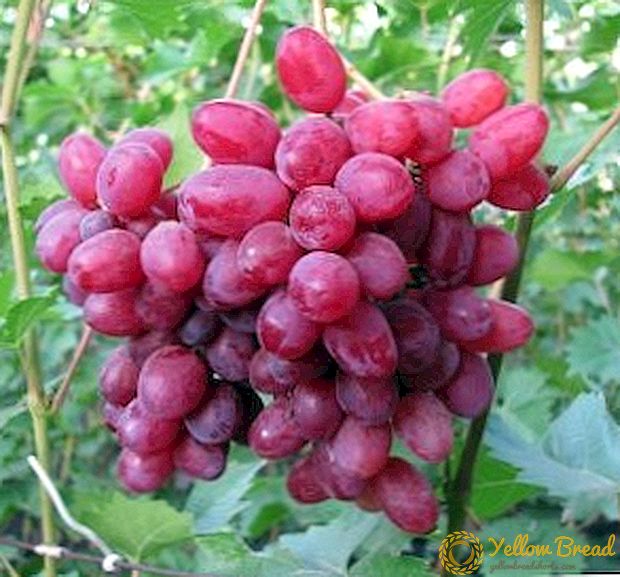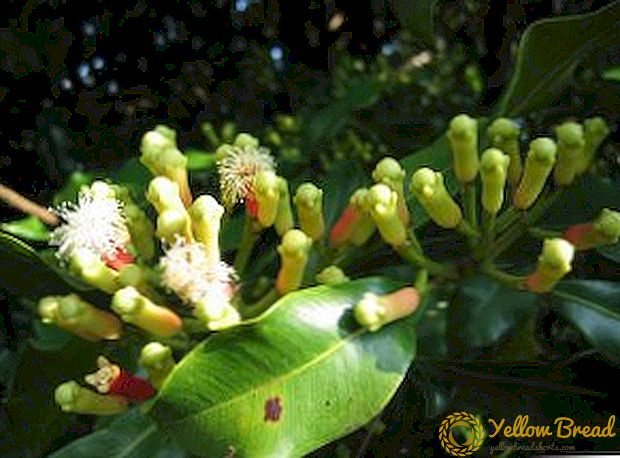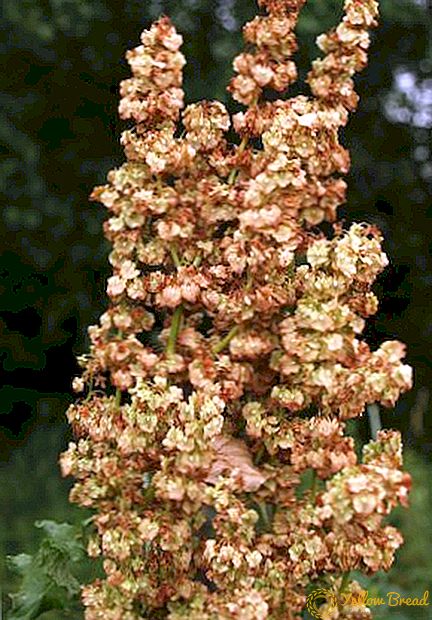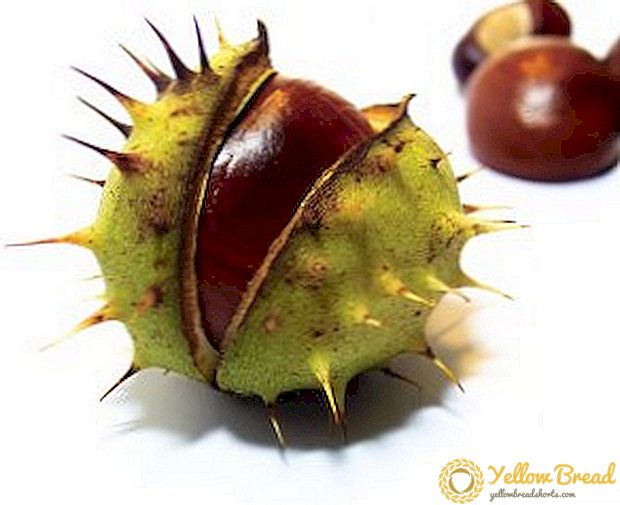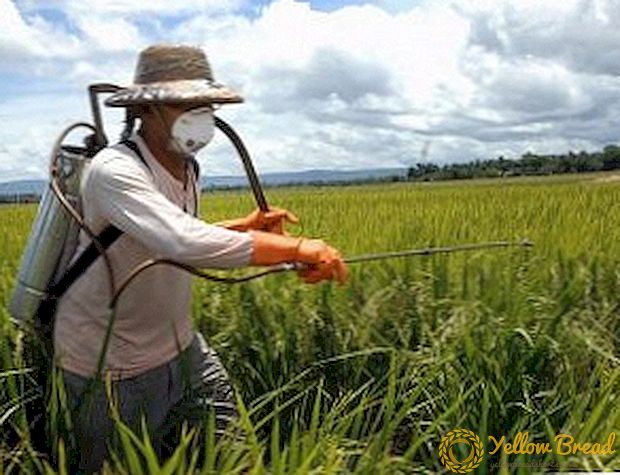 Herbicides are chemicals used to kill weeds. Some chemicals operate extensively and kill all vegetation. Others are selective (selective) and fight only with certain plant species, without damaging the rest. To the second group belongs "Singer".
Herbicides are chemicals used to kill weeds. Some chemicals operate extensively and kill all vegetation. Others are selective (selective) and fight only with certain plant species, without damaging the rest. To the second group belongs "Singer".
- Composition and preparative form
- Benefits
- Operating principle
- Crop rotation restrictions
- Method and time of application, consumption
- Impact speed
- Period of protective action
- Security measures
- Shelf life and storage conditions
Composition and preparative form
"Singer" - a herbicide intended for the destruction of annual and perennial dicotyledonous weeds. This tool is used for sprouting flax and grain crops. It is used to clean unwanted plants from non-agricultural areas, for example, along the oil, gas pipeline and highway. The active ingredient in the "Singer" - metsulfuron-methyl (600 g / kg). This is a herbicide with a wide range of applications.
It is recommended to apply it to sprinkling of wheat before and after germination, and barley, oats, rye and flax - after the emergence of shoots. Preparative form: wettable powder, which, in addition to the active component, contains fillers and surfactants. When dissolved in water, the powder becomes a stable suspension. In this form, the agent adheres well to plants and lasts longer on them than other preparations; therefore, it acts effectively and is not wasted.

Benefits
Due to the active substance, as well as its preparative form, "Singer" has a number of positive points:
- extensive exposure: suppresses most annual and many perennial dicotyledonous weeds;
- economical;
- material resources are saved when pollinating large cultivated areas;
- flexible terms of application;
- means is conveniently packaged in water-soluble bags: they do not need to be opened, but rather put in water;
- effectively acts on weeds, regardless of the weather;
- almost harmless to animals and bees: moderately toxic.
Operating principle
The chemical first gets on the roots and leaves of the grass, seeps into it and systemically moves through it, affecting the enzyme acetolactate synthase. Such an intervention disrupts the connection of amino acids. As a result, the cells stop dividing, the grass stops growing and dies. The effect of the poison can be seen from chlorotic stains and the death of growth points. These are clear signs of the imminent weed.

Crop rotation restrictions
When reseeding the pickled areas, care must be taken, since not all cultures can be sown immediately. After the grain and flax, you can plant spring cereals.Beets and other vegetables should not be planted in this field, even next season. Sunflower and buckwheat should be sown only after deep plowing. But they are also undesirable to plant, if, after pollination, the herbicide was a prolonged drought and if the pH of the soil is higher than 7.5.
Method and time of application, consumption
The working fluid is prepared not in advance, but before sprinkling: dilute 1 sachet (25 g) with 1 liter of water with the casing until completely dissolved (for airborne operations - 50 g per liter of water). Herbicide "Singer" will save the field from weeds, only if you exactly follow the instructions for its use:
- Spring crops are sprinkled at the early stage of growth of one-year dicotyledonous grass (2-4 leaves) and perennial dicotyledon at the rosette stage (in grain crops, from the phase of 2 leaves until the end of tillering). The flow rate of the working fluid: 200-300 l / ha by land and 25-50 l / ha - by aviation;
- winter crops are sprinkled in the spring at the early stage of growth of annual weeds (2-4 leaves) and perennial ones - in the rosette phase (for crops - the tillering period). Consumption: 200-300 l / ha and 25-50 l / ha;
- Spring and winter cereals are sprayed at the beginning of weed growth (for crops, the tillering stage, for winter crops, in spring) together with 2,4-D - 0.35 kg / ha. Consumption: 200-300 l / ha;
- flax-dolgun gets a portion of "Singer" at the stage of "Christmas tree", the height of flax - 3-10 cm. Consumption: 200-300 l / ha and 25-50 l / ha. At this stage, the possible connection of "Singer" and MCPA - 150 g / ha. Consumption: 200-300 l / ha.

The tool effectively acts independently. But it can be mixed with other chemicals, for example, MCPA and 2,4-D.
Impact speed
- 4 hours after spraying, the active substance is completely absorbed by the weeds.
- Within 24 hours they stop growing.
- After 3–10 days, signs of extinction become apparent.
- On the 20-30th day the plant perishes completely: it depends on its development, its sensitivity and weather. Unfavorable weather slows down the effect of the drug.
Period of protective action
If conditions are favorable, the protective effect of the chemical continues throughout the growing season.
Security measures
Herbicide "Singer" does not pose a special danger to people, if not deviate from the accepted norms of application. It is also almost not dangerous for bees. But you should follow the instructions for the prevention of pesticide poisoning of bees. Sprinkle crops early in the day or after sunset.When ground spraying and winds up to 4-5 m / s:
- limited area for bees not less than 2-3 km;
- The flight of bees should be limited to 8-9 hours.
- the area for bees is not less than 5-6 km;
- reducing the time of flight of bees to 8-9 hours.
- Bee holders need to be notified 4-5 days before starting work with a chemical.

Shelf life and storage conditions
The Singer herbicide is a toxic substance of the third class of danger. When transporting it is necessary to adhere to all the rules for the movement of toxic substances. Keep only in designated places. Storage temperature - from -15 to +40 ° C. The package contains water-soluble sachets of 25 g and 50 g of powder. Do not open the bags. Shelf life - 2 years. In agriculture, herbicides are indispensable; they are especially needed for growing grain crops: spring and winter wheat, spring and winter barley, and others. "Singer" copes with this task.


